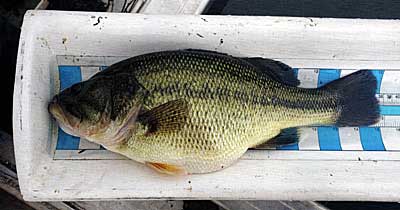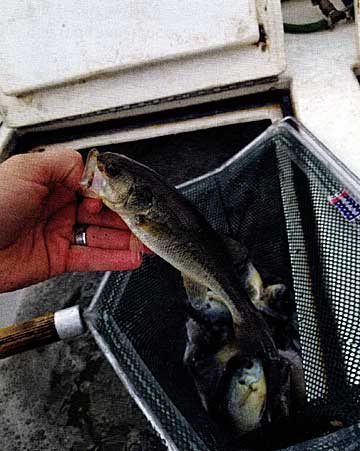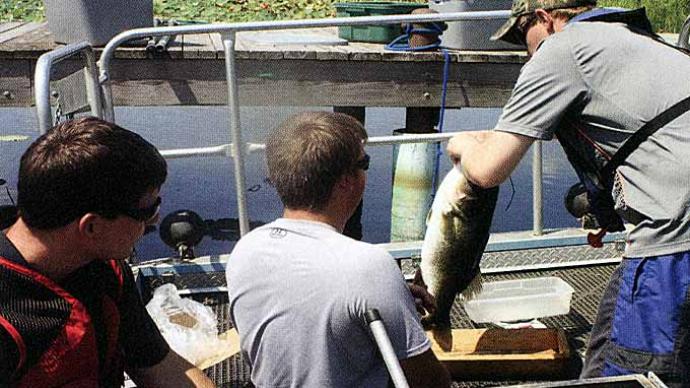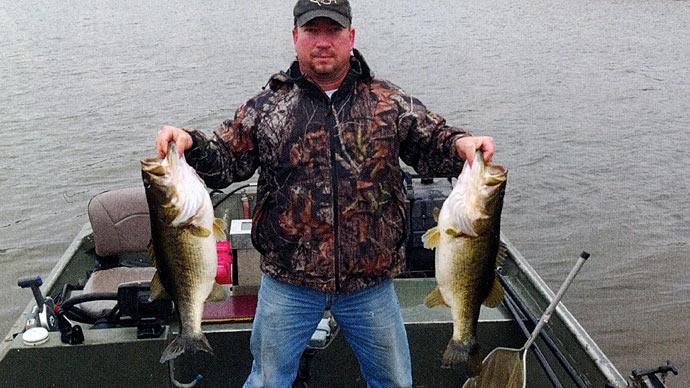
Spring months are a great time to be outdoors, soaking up sunshine while fishing with family and friends on private water. This time of year brings some of the most exciting Largemouth bass fishing, with chunky, egged-up females tipping the scales at their heaviest weights. Each passing year, some people have the pleasure of witnessing their trophy Largemouth bass fishery continue to improve. Others have the pleasure of watching it maintain a dominant status as it produces another generation of trophy fish. Unfortunately for others, their fishery has not yet developed properly or, most common of all, they have the misfortune of watching their beloved fishery peak and then decline, producing fewer and fewer quality fish as each year passes.
All trophy fisheries are vulnerable to falling off-track, and in many cases the warning signs are subtle and easy to miss. This begs the question; "How do you know your fishery is on track?" The complex answer to this question depends on how each generation of predator fish and forage fish in your waterbody is doing, in addition to having accurate data on water quality and productivity. In most cases people answer this question using data and observations related to one or two generations of predator fish paired with a decent forage population and consistent management throughout the year.
The reality is, the current success and performance by a fishery's older generation of predator fish is not indicative of future success for younger generations. Going through the motions of stocking forage fish, feeding, fertilizing, harvesting predator fish, etc. is not sufficient if having a sustainable, successful fishery year after year is important to you. Management decisions should be data-driven and have specific intentions behind them. In the months following management actions, data should be collected to verify management strategies are having the intended positive effect, and if they are not, make adjustments.
A significant data point is knowing the approximate bass population. Too few bass result in poor angler catch rates as well as a reduced number of future trophy-size fish. Too many bass result in slower growth rates and significantly reduce the probability of achieving a sustainable trophy fishery. If you know approximately how many bass you have, harvesting (and stocking) decisions become easier. For this reason, some people maintain all-female bass populations, since they have far better control over the number of predators. If you do not have an all-female population, then collect data to better determine how many bass you have. This is best done using a mark-recapture study, with a goal of eventually tagging as many bass as possible.
In addition to maintaining the right number of bass, it's also important to ensure that the population spreads out across multiple age classes. A disproportionate number of larger fish today will result in too few large bass tomorrow. Alternately, too many small bass today may result in no large bass tomorrow. Do you know how old each size class of bass is?

We know maintaining a multitude of age classes is key, but how do you determine that? The best way to know would be to tag or mark each generation of bass and track their growth. If your bass are not already tagged, then the first step would be to begin collecting age and growth data by pulling otoliths from a small sample of the population. On large impoundments (say 20-500 acres), we would typically sample 100-150 bass to ensure the dataset is statistically significant. This would usually result in aging around 30 bass from each size class, keeping in mind that it's not as common to age fish once they reach large sizes, since you must kill the fish to extract the otolith. Age data from larger fish is incredibly insightful, but few people have the willingness to sacrifice a larger fish. On smaller impoundments, the goal is to age as many fish as possible without negatively impacting the population. A fisheries biologist can recommend the right sampling size for your fishery based on the site-specific fisheries data and knowledge of stakeholder goals. This data is used to verify your fish are the right size for their age. If they are too small, then you would likely harvest them. In some cases, you would harvest entire age classes if they are underperforming. If the bass are proper size for their age, then tag or mark as many of them as possible so you can better monitor if they are hitting annual growth goals. Having this ability to determine if specific age classes of bass are hitting their growth goals is tremendous insight if looking for a sustainable fishery.
Population and age data teamed with progressive management strategies related to fertilizing, feeding, harvesting, and forage stocking results in a far greater chance of success.
Relative weight data (Wr), which is a metric that compares your bass's weight to what an average bass should weigh, is a common analytical that people use to manage fisheries. Many people have a habit of looking at Wr to determine if management action is required, but unfortunately this can quickly lead someone off track. This is because looking at Wr is a reactive approach. For a bass to have a less than desired Wr, they must first weigh less than you would like them to. If they are underweight, then you are already behind, and possibly well behind. Once behind, you then make management decisions to get things back on track, but these types of improvements take time, and during this process your underweight bass typically continue to underperform. Therefore, when using Wr to tell if you are on track, set your minimum Wr threshold at 100 or higher. If looking to push your fishery to the max, set the minimum Wr at 110. This gives you a buffer. If you slide down from 120 to 110, you have time to make improvements to the management strategy before the wheels fall off.
It can be overlooked at times, but it is important to keep in mind that fish can have a low Wr for many reasons besides not enough to eat. It is a natural tendency for fish to eat less when under stress. As a result, a waterbody could have sufficient forage, but undesirable water quality such as low dissolved oxygen, low or high pH, or elevated ammonia levels. Hot water temperatures can cause bass to underperform. Other common stressors could also be dense blue-green algae blooms as well as excessive fishing pressure or handling from anglers.
So, if your management strategy is to harvest bass each time they have poor Wr's you should also review water quality and algae data to verify that you are making accurate assumptions that the poor Wr is from a lack of forage. Testing water quality once annually should be the bare minimum for all trophy fisheries. Important parameters should be tested far more frequently if budget allows.
Properly monitoring water quality, plankton populations as well as the forage population are all leading indicators that can tell bass with a Wr of 115 will soon have a Wr of 100 if you do not take action. Therefore, although looking at Wr is helpful, it is far more reactive than other management strategies available, and should not be the first indicator you notice when things are headed off track.
The most effective way to assess the forage population is to use an electrofishing boat. The best way to understand your plankton population is to use a microscope (or in some cases water quality meters). How often you apply these strategies depends on goals and budget. If settling with a fish that reaches half of its potential growth (i.e., a 5-pound Largemouth bass), then you can cut corners and collect far less data. If you are looking to push Largemouth bass to its limit and try to grow 8-10-plus pound bass year after year, then you should reduce as many assumptions as possible by implementing a proactive management strategy.
Data-driven management strategies are complex and tailored to specific waterbodies. If you are not collecting the proper data, then you are rolling the dice. Past success is not indicative of future success.
If creating or sustaining the trophy bass fishery of your dreams is important, then collect the needed data to drive management decisions.
David Beasley is a Fisheries Biologist and the Director of Fisheries at SOLitude Lake Management, an environmental firm providing sustainable lake, pond, wetland and fisheries management services. Learn more about this topic at www.solitudelakemanagement.com/ knowledge
Reprinted with permission from Pond Boss Magazine



